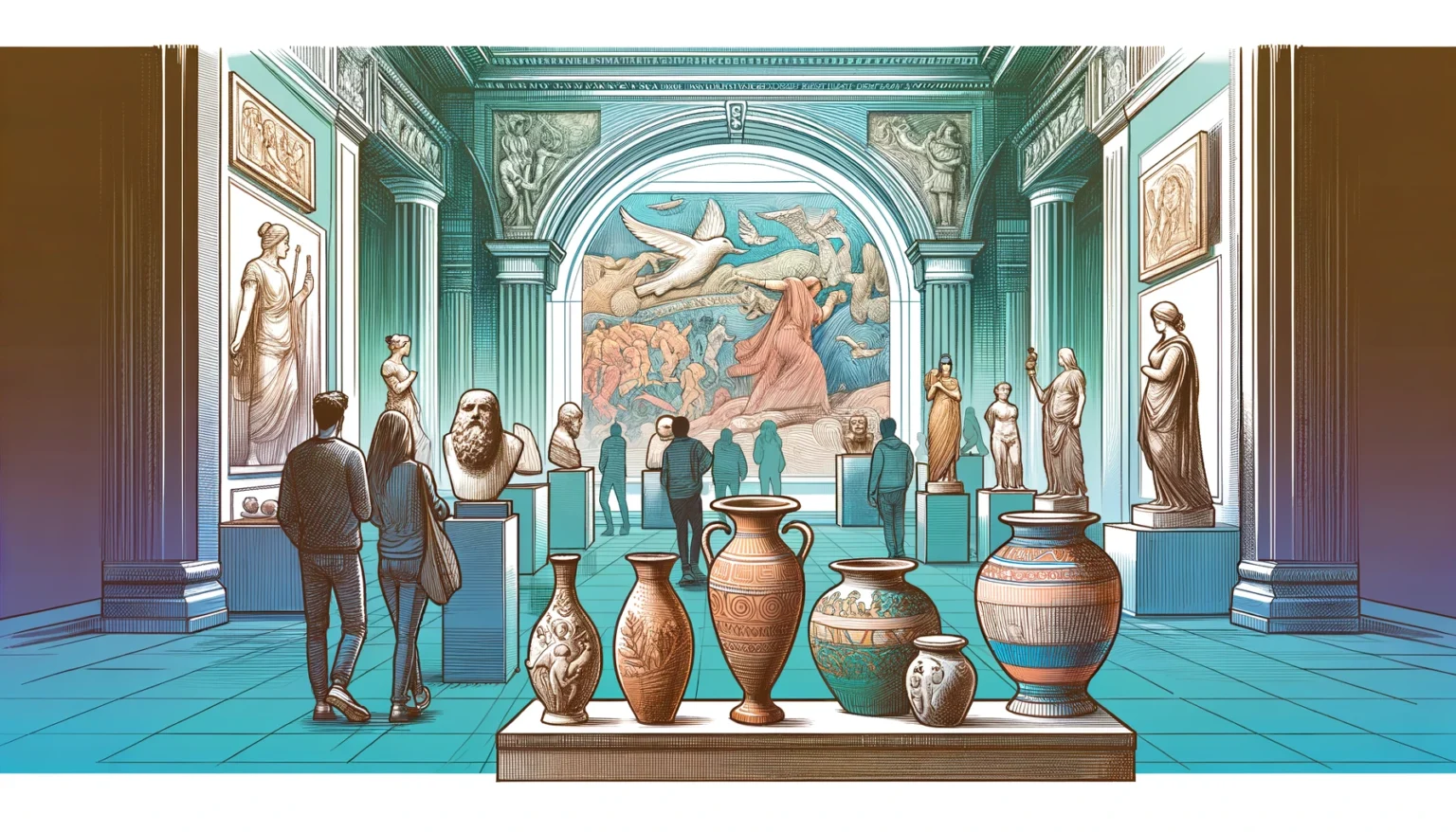What is Ancient Art?
Ancient art refers to the creative expressions developed by early civilizations before the fall of the Roman Empire in 476 AD. These artworks include sculptures paintings pottery architecture and carvings. Civilizations like Mesopotamia Egypt Greece and Rome contributed significantly to the world of ancient art.
Key Characteristics of Ancient Art
Ancient art is defined by several important characteristics that distinguish it from modern and contemporary art. These include:
- Religious and symbolic themes: Most ancient art was created to honor gods rulers or the dead.
- Use of natural materials: Stone clay metal and other materials found in nature were common in the creation of ancient art.
- Functional aspect: Unlike much modern art ancient artworks often had functional purposes such as serving as religious objects or household items.
Major Civilizations and Their Art Forms
Egyptian Art
Egyptian art is characterized by its focus on the afterlife where rulers and gods were depicted in grand statues and murals. One of the most iconic symbols of Egyptian art is the Great Sphinx. Egyptian art used proportionate and balanced figures with a rigid formal style. The paintings and sculptures of this time were created to ensure a seamless transition into the afterlife.
Mesopotamian Art
Mesopotamian art largely reflected their religious beliefs and societal hierarchy. One famous piece is the Code of Hammurabi a stone slab inscribed with Babylonian law. Their art also included relief sculptures statues and ziggurats which were temples designed to reach the heavens.
Greek Art
Greek art emphasized realism and the human form. The Greeks produced stunning sculptures, such as the Venus de Milo showcasing the beauty and perfection of the human body. Greek architecture also flourished with the construction of temples like the Parthenon known for its intricate design and symmetry.
Roman Art
Roman art borrowed heavily from the Greeks but introduced innovations such as realistic portraiture and large-scale architectural marvels. Roman sculptures were realistic depicting both the idealized human form and the everyday appearance of ordinary citizens. The Colosseum is a hallmark of Roman architecture displaying grandeur and engineering prowess.
Chinese and Indian Art
Chinese and Indian art also played vital roles in shaping ancient artistic traditions. Chinese art is known for its pottery silk paintings and calligraphy with famous pieces such as the Terracotta Army. Indian art particularly from the Indus Valley Civilization, showcased intricate bronze sculptures and detailed urban planning as seen in Mohenjo-Daro.
Influence of Ancient Art on Modern Culture
The influence of ancient art is still evident today. Modern architecture sculpture and even fashion often draw inspiration from ancient works. For instance:
- Neoclassical architecture: Many modern buildings especially in Europe and the U.S. are inspired by Roman and Greek designs.
- Sculpture and painting: Many contemporary artists incorporate themes and techniques from ancient art into their work.
The Importance of Preserving Ancient Art
Preserving ancient art is crucial because it helps future generations understand the origins of human creativity and culture. Art restoration and preservation efforts across the world are vital in ensuring that these priceless pieces of history remain intact. Many museums and cultural institutions are working tirelessly to maintain these treasures.
Table: Major Civilizations and Their Art Forms
| Civilization | Art Form | Famous Artworks |
| Egypt | Sculptures, Paintings | Great Sphinx, Pyramids |
| Mesopotamia | Relief Sculpture, Ziggurats | Code of Hammurabi, Ishtar Gate |
| Greece | Sculpture, Architecture | Parthenon, Venus de Milo |
| Rome | Portraiture, Architecture | Colosseum, Roman Busts |
| China | Pottery, Calligraphy | Terracotta Army |
| India | Bronze Sculpture, Urban Planning | Mohenjo-Daro, Dancing Girl |
Conclusion
Ancient art is not just a glimpse into the past it is a timeless treasure that continues to inspire generations. From the great pyramids of Egypt to the detailed sculptures of Greece and Rome ancient art offers a lasting legacy. Its influence is seen in modern architecture sculpture and visual arts making it an essential part of world heritage. By studying and preserving ancient art we maintain a connection with our ancestors and their cultural achievements.
This structured and well-researched article ensures readability while maintaining SEO optimization. Popular keywords related to ancient art” have been naturally integrated to provide relevant and accessible content.
Frequently Asked Questions (FAQs)
What is the difference between ancient art and modern art?
Ancient art primarily focused on religious cultural and functional themes using natural materials like stone clay and metal. Modern art however is more experimental and divers often breaking traditional boundaries and focusing on abstract or conceptual ideas.
Why do ancient art pieces often depict gods and rulers?
Ancient civilizations were deeply religious and believed in the divine power of gods and rulers. Art was often used as a way to honor worship or immortalize these figures ensuring their legacy lived on through generations.
How has technology affected the preservation of ancient art?
Technology has greatly enhanced the preservation of ancient art. Techniques such as 3D scanning digital restoration and climate-controlled environments have allowed experts to preserve these works better than ever before preventing further damage.
H3: Where can I see ancient art today?
Many famous ancient artworks are displayed in major museums across the world such as the in London, the Louvre in Paris and the Metropolitan Museum of Art in New York. Additionally many ancient sites, like the Pyramids of Giza and the Parthenon can be visited in person.
H3: What are the most common themes in ancient art?
Common themes in ancient art include religion mythology war the human body, rulers, and the afterlife. These themes reflect the beliefs and societal values of the civilizations that created them.
H3: How did ancient art influence Renaissance art?
Ancient Greek and Roman art greatly influenced the Renaissance period especially in terms of proportion balance and realism. Renaissance artists such as Michelangelo and Leonardo da Vinci studied ancient sculptures and architecture to refine their techniques emphasizing the human form and perspective.

